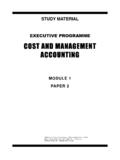Transcription of The world healTh reporT 2007 A sAfer future - WHO
1 The world healTh reporT 2007 Global public healTh SecuriTy in The 21ST cenTuryA sAferfutureWHO Library Cataloguing-in-Publication DataWorld healTh world healTh reporT 2007 : a sAfer future : global public healTh security in the 21st healTh trends. outbreaks prevention and control. , healTh . cooperation. healTh . : A sAfer future : global public healTh security in the 21st 978 92 4 156344 4 (NLM classification: WA )ISSN 1020-3311 world healTh organization 2007 All rights reserved. Publications of the world healTh organization can be obtained from WHO Press, world healTh organization , 20 Avenue Appia, 1211 Geneva 27, Switzerland (tel.: +41 22 791 3264; fax: +41 22 791 4857; e-mail: Requests for permission to reproduce or translate WHO publications whether for sale or for noncommercial distribution should be addressed to WHO Press, at the above address (fax: +41 22 791 4806; e-mail: The designations employed and the presentation of the material in this publication do not imply the expression of any opinion whatsoever on the part of the world healTh organization concerning the legal status of any country, territory, city or area or of its authorities, or concerning the delimitation of its frontiers or boundaries.))
2 Dotted lines on maps represent approximate border lines for which there may not yet be full h e m e n t i o n o f s p e c i fi c c o m p a n i e s o r o f c e r t a i n m a n u f a c t u r e r s p r o d u c t s d o e s n o t i m p l y t h a t t h e y a r e e n d o r s e d o r r e c o m m e n d e d by the world healTh organization in preference to others of a similar nature that are not mentioned. Errors and omissions excepted, the names of proprietary products are distinguished by initial capital reasonable precautions have been taken by the world healTh organization to verify the information contained in this publication. However, the published material is being distributed without warranty of any kind, either expressed or implied. The responsibility for the interpretation and use of the material lies with the reader. In no event shall the world healTh organization be liable for damages arising from its use.
3 Information concerning this publication can be obtained from: world healTh reporT world healTh Organization1211 Geneva 27, SwitzerlandE-mail: of this publication can be ordered from: reporT was produced under the leadership of Director-General, Margaret Chan. David Heymann, Assistant Director-General for Communicable Diseases, was Editor-in-Chief. The main writers were Thomson Prentice and Lina Tucker Reinders of the world healTh reporT dvice and suppor t were gratefully received from all A s sis t ant Direc tor s- G eneral, Regional Director s, numerous W H O technical unit s, and many others who reviewed and contributed to the text. Special thanks for their contributions are due to Tomas Allen, Penelope Andrea, Bruce Aylward, Anand Balachandran, Sona Bari, Diarmid C ampbell- L endrum, A mina Chaieb, Claire L ise Chaignat, May Chu, A lber t C oncha- E as tman, O t torino C osivi, A lvaro Cruz, Kevin De C ock ,S ophia Desillas, Pat Drury, Pierre Formenty, Keiji Fukuda, Fernando Gonzalez Martin, Pascal Haefliger, Max Hardiman, Mary Kay Kindhauser, Colin Mathers, Angela Merianos, Francois-Xavier Meslin, Michael Nathan, Maria Neira, Paul Nunn, Kevin O Reilly, Andr e Pinard-Clark, Guenael Rodier, Oliver Rosenbauer, Cathy Roth, Mike Ryan, Jorgen Schlundt, George Schmid, Ian Smith, Claudia Stein and Leo reporT was edited by Diana Hopkins, assisted by Barbara Campanini.
4 Figures, tables and other illustrations were provided by Gael Kernen, who also produced the web site version and other electronic media. Vreni Schoenenberger assisted in historical research. Administrative support to the world healTh reporT team was provided by Saba Amdeselassie. The index was prepared by June credit s: Agence France- Pres se/ Paula Brons tein ( pp. viii, 3 4); International Federation of the Red Cros s and Red Crescent S ocieties ( I F RC ) /Christopher Black (p. 25); IFRC/Marko Kokic (p. 22); United Nations Integrated Regional Information Networks (IRIN) (p. 41); Jean-Pierre Revel (p. 30); United States National Library of Medicine (NLM) (p. 47); WHO/Olivier Asselin (pp. viii, 16); WHO/Christopher Black (pp. viii, xiv, xvi, xviii, xx, xxii, 1, 16, 34, 44, 56, 64); WHO/Christopher Black, Chris de Bode, Umit Kartoglu, Marko Kokic and Jean Mohr (cover); WHO/Chris de Bode (p.)
5 19); WHO/Marko Kokic (pp. 20, 21); WHO/Jean Mohr (pp. viii, 1).Illustrations: The Plague Doctor, unknown artist, Wellcome Library, London (p. 2); Death s Dispensary, George Pinwell, 1866 (p. 4); Edward Jenner Performing the First Vaccination against Smallpox in 1796, Gaston Melingue, 1879, Biblioth que de l Acad mie nationale de M decine, Paris (p. 5).Design: Reda SadkiLayout: Steve Ewart and Reda SadkiFigures: Christophe GrangierPrinting Coordination: Rapha l CrettazPrinted in FranceconTenTSMessage from the Director-General viOverview viiiGlobal public healTh threats in the 21st century xEpidemic-prone diseases xFoodborne diseases xiAccidental and deliberate outbreaks xiToxic chemical accidents xiRadionuclear accidents xiEnvironmental disasters xiiGlobal collaboration to meet threats to public healTh security xiiChapter summaries xivChapter 1. Evolution of public healTh security 1 Building on historical landmarks 2 Plague and quarantine 2 Cholera and sanitation 4 Smallpox and immunization 5 Fostering international cooperation 6A new code for international healTh security 8 International preparedness for chemical emergencies 10 New healTh regulations in a vastly altered world 11 Chapter 2.
6 Threats to public healTh security 17 Human causes of public healTh insecurity 17 Inadequate investment 18 Unexpected policy changes 20 Public healTh consequences of conflict 21 Microbial evolution and antibiotic resistance 22 Animal husbandry and food processing 24 Human bovine spongiform encephalopathy 24 Nipah virus 24 Weather-related events and infectious diseases 25 Other public healTh emergencies 26 Sudden chemical and radioactive events 27 Industrial accidents 29 Natural phenomena 31 1chapter2chapteriiiChapter 3. New healTh threats in the 21st century 35 The anthrax letters 35 SARS: vulnerability revealed 37 Dumping of toxic chemicals 40 Chapter 4. Learning lessons, thinking ahead 45 Pandemic influenza: the most feared security threat 45 WHO s strategic action plan for pandemic influenza 52 Extensively drug-resistant tuberculosis 52 Managing the risks and consequences of the international spread of polio 54 Chapter 5.
7 Towards a sAfer future 57 Helping countries helps the world 58 Global partnerships 58 Strengthening national capacity 61 Preventing and responding to international public healTh emergencies 63 Legal issues and monitoring 64 Conclusions and recommendations 66 Index 693chapter4chapter5chapterivFigures ChaptersFigure Spread of bubonic plague in Europe 3 Figure Examples of international epidemic response missions, 1998 1999 8 Figure International public healTh security: a global network of national healTh systems and technical partners, coordinated by WHO, founded on four major areas of work 10 Figure Selected emerging and re-emerging infectious diseases, 1996 2004 12 Figure Twenty-five years of HIV/AIDS 18 Figure Global outbreaks, the challenge: late reporting and response 19 Figure Evolution of penicillin resistance in Staphylococcus aureus: a continuing story 23 Figure Probable SARS transmission on flight CA112 in March 2003 38 Figure Direct economic impact of selected infectious disease outbreaks, 1990 2003 40 Figure WHO influenza surveillance network 46 Figure Cumulative number of confirmed human cases of avian influenza A/(H5N1) reported to WHO since 2003 48 Figure Poliovirus importations, 2003 2006 54 Figure Events that may constitute a public healTh emergency of international concern.
8 The decision instrument 59 Figure Verified events of potential international public healTh concern, by WHO region, September 2003 September 2006 63 Boxes ChaptersBox Public healTh security 1 Box International collaboration on infectious disease control 7 Box Marburg haemorrhagic fever and healTh systems in conflict situations 21 Box The deliberate use of chemical and biological agents to cause harm 27 Box Economic impact of SARS and influenza pandemics 39 Box The role of the mass media in risk perceptions 41 Box WHO meeting concludes that global stockpiles of H5N1 vaccines are feasible 50 Box IHR (2005) early implementation efforts 61 Tables ChaptersTable Examples of major chemical incidents (1974 2006) 28 Table Seven strategic actions to guide IHR (2005) implemention 60vThe world has changed dramatically since 1951, when who issued its first set of legally binding regulations aimed at preventing the international spread of disease.
9 At that time, the disease situation was relatively stable. Concern focused on only six quarantinable diseases: cholera, plague, relapsing fever, smallpox, typhus and yellow fever. New diseases were rare, and miracle drugs had revolutionized the care of many well-known infections. People travelled internationally by ship, and news travelled by The direcTor-GeneralSince then, profound changes have occurred in the way humanity inhabits the planet. The disease situation is anything but stable. Popula-tion growth, incursion into previously uninhabited areas, rapid urbaniza-tion, intensive farming practices, environmental degradation, and the misuse of antimicrobials have disrupted the equilibrium of the microbial world . New diseases are emerging at the historically unprecedented rate of one per year. Airlines now carry more than 2 billion passengers annually, vastly increasing oppor tunities for the rapid international spread of infectious agents and their on chemicals has increased, as has awareness of the potential hazards for healTh and the environment.
10 Industrialization of food production and processing, and globalization of marketing and distribution mean that a single tainted ingredient can lead to the recall of tons of food items from scores of countries. In a particularly ominous trend, mainstay antimicrobials are failing at a rate that outpaces the development of replacement threats have become a much larger menace in a world characterized by high mobility, economic interdependence and electronic interconnectedness. Traditional defences at national borders cannot pro-tect against the invasion of a disease or vector. Real time news allows panic to spread with equal ease. Shocks to healTh reverberate as shocks to economies and business continuity in areas well beyond the affected site. Vulnerability is public healTh securityworld healTh reporT 2007in the 21st centuryThe world healTh reporT 2007 is dedicated to promoting global public healTh security the reduced vulnerability of populations to acute threats to healTh .
















